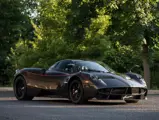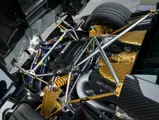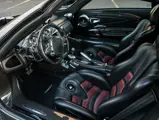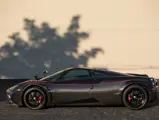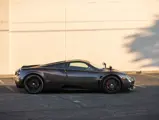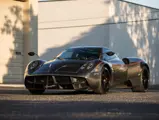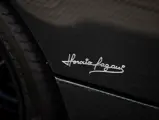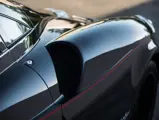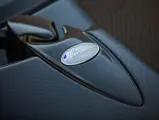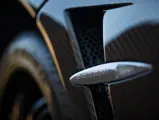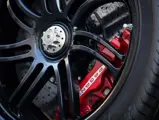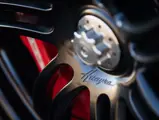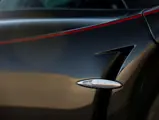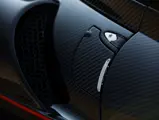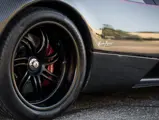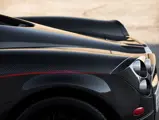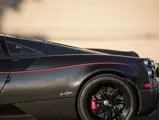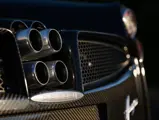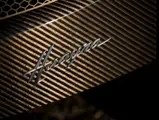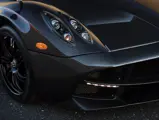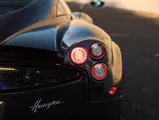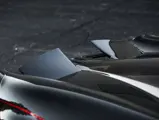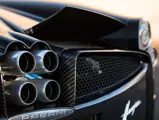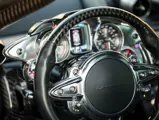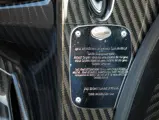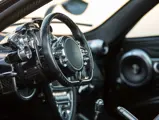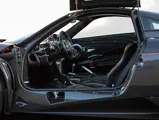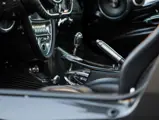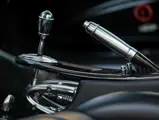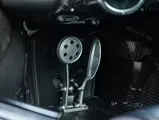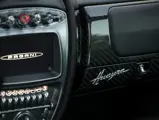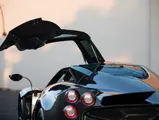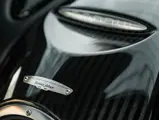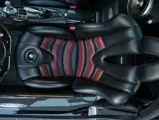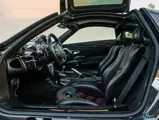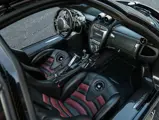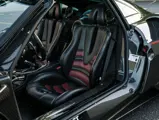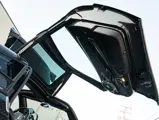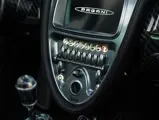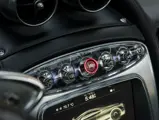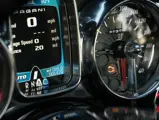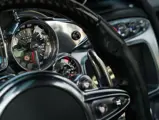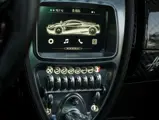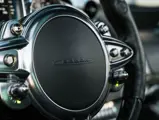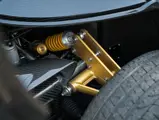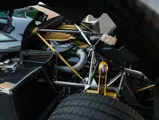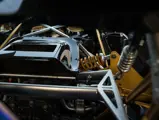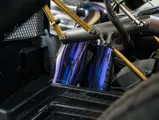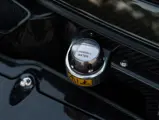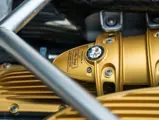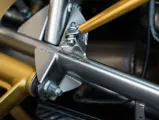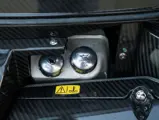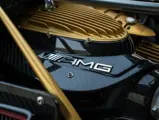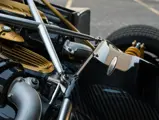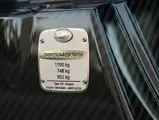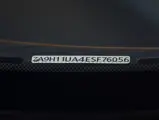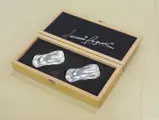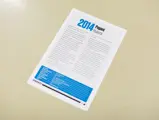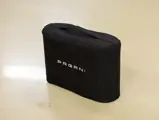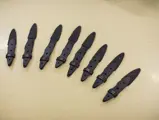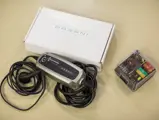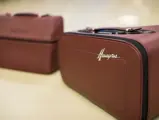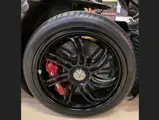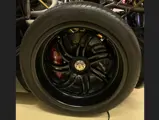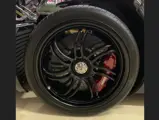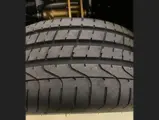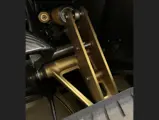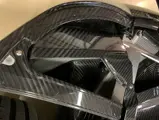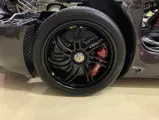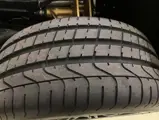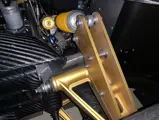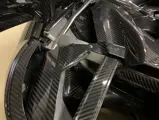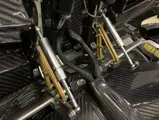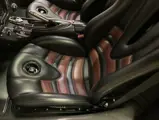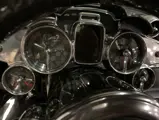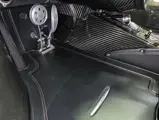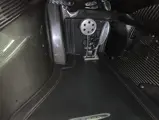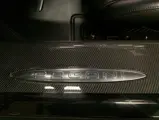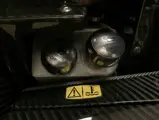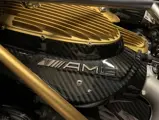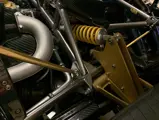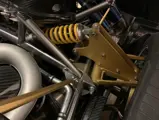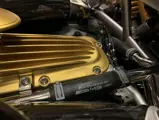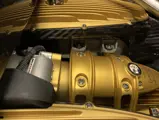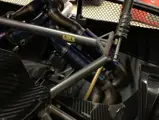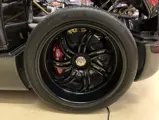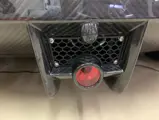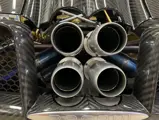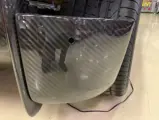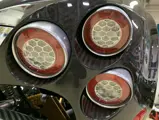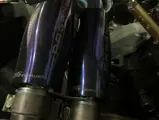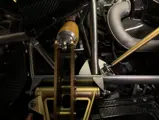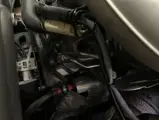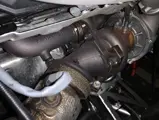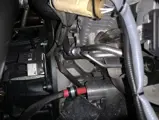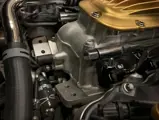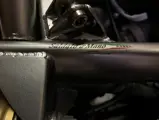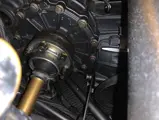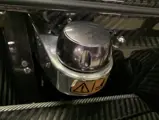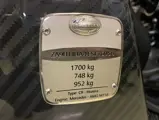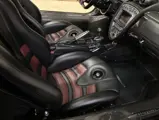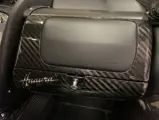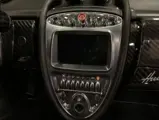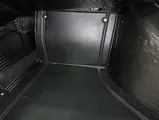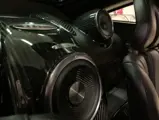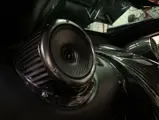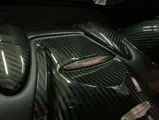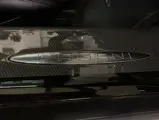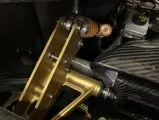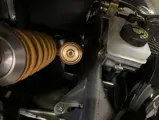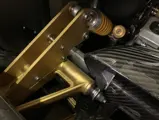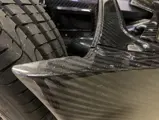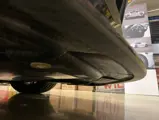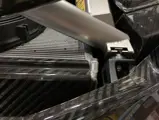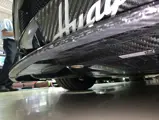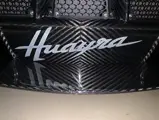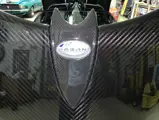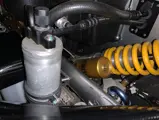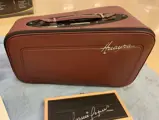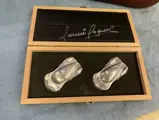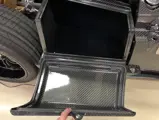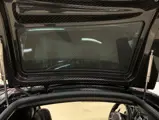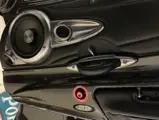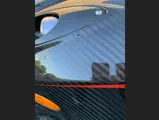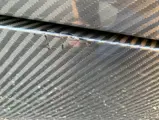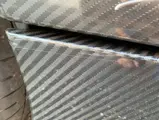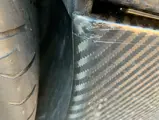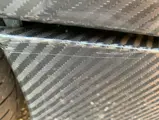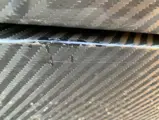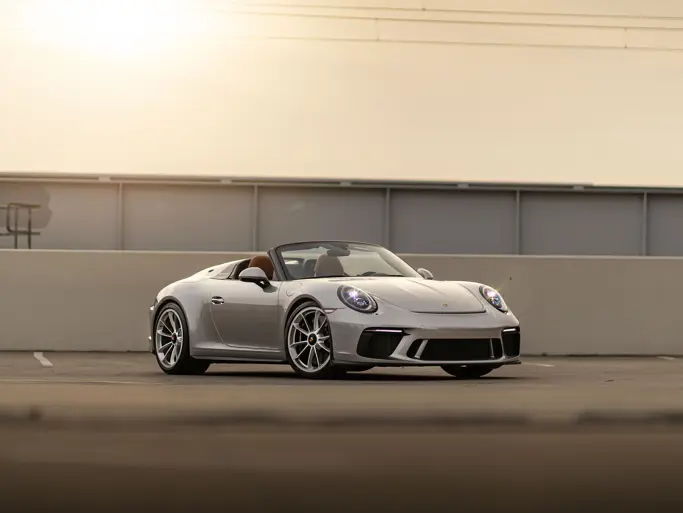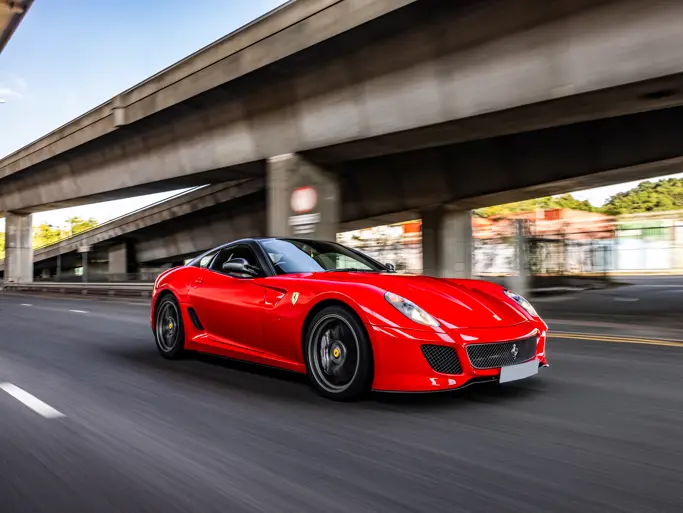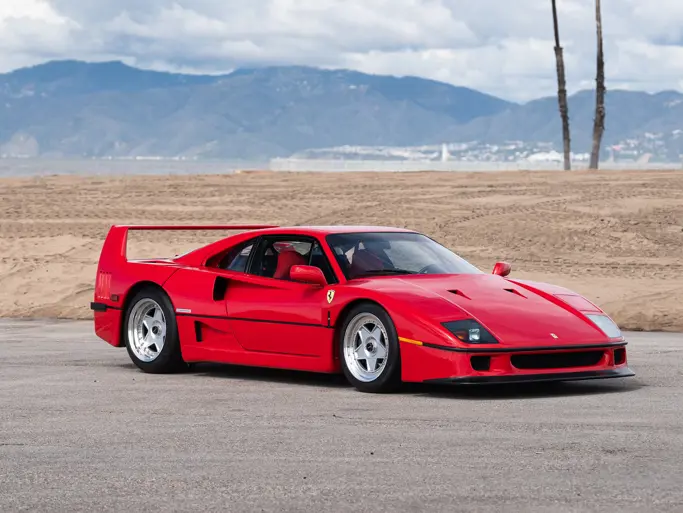SHIFT/Monterey 2020
2014 Pagani Huayra
{{lr.item.text}}
$1,848,000 USD | Sold
 | Canton, Michigan
| Canton, Michigan
{{internetCurrentBid}}
{{internetTimeLeft}}

- 56th of just 100 bespoke examples produced between 2011 and 2016
- Fully exposed carbon fiber over premium Malevic and Ametista leather with red contrast stitching, anodized titanium trim
- 730 hp, 6.0-liter twin-turbocharged V-12 engine hand-assembled by Mercedes-AMG
- Seven-speed Xtrac automated manual gearbox
- Over $160,000 of optional factory equipment including exposed carbon bodywork and splitter, black painted wheels, custom caliper paint, and Tricolore mirrors
- Originally delivered to British Motor Exotics of San Francisco, California
- Just under 5,500 miles indicated since new
- Exhibited at 2016 San Francisco Chronicle Auto Show
No one can accuse Horacio Pagani—an Argentina-born auto industry veteran with a stint at Lamborghini on his resumé—of a deficit of ambition: Inspired by the work of Leonardo da Vinci, Pagani sought to carve out his own niche in the seemingly impenetrable bespoke hypercar industry. His objective was to emulate the Renaissance master’s ability to walk the fine line between art and science.
Taking stylistic inspiration from objects in nature as well as automobiles of the past, Pagani set out to build a car that was sensual in form and seductive in performance. He desired to create a tailor-made exotic automobile that the enthusiast could fall in love with—and one that would stimulate the senses for not only the driver, but also the passenger, and anyone who happened to see it pass by. Pagani’s first production car, the Zonda, proved to be a massive success, illustrating that with a little luck and a lot of talent, it was possible for a new manufacturer to compete with the supercar establishment.
In 2003, just a few years into the Zonda’s production run, work began on the firm’s next model. Instead of evolving the Zonda, the company decided to pursue a different path, building a totally new car that could stand on its own merit. Pagani wanted something that was distinctive in both performance and aesthetics, yet immediately recognizable as a Pagani.
Years of research and development ensured, and when it was finally released to the discerning public, the new chassis employed only the most cutting-edge technical solutions to provide an exceptional driving experience. First known under the internal moniker “C9”, Pagani formally revealed the prototype mule as the “Huayra”—a reference to a wind god of South America’s Quechua people—via press release on January 25, 2011; the chassis was exhibited at Pirelli’s Milan headquarters just two weeks later.
The Huayra retained the unique quad-headlight and tailpipe design cues of the Zonda, but the body was slightly larger and more muscular, hinting at the increased performance within. Characteristic design elements included he car’s roof-hinged doors and, significantly, its active aerodynamics. Four independently operating flaps, one on each corner of the car, are controlled by the onboard computer; these flaps instantly adjust to reduce drag, offer additional downforce, or rein in body roll depending on the car’s speed, lateral acceleration, steering angle, and throttle position.
Cradled within Pagani’s own carbo-titanium monocoque is, as on the Zonda, a Mercedes-AMG-supplied a 6.0-liter V-12. This time, however, the engine was fitted with twin turbochargers, making for a distinctly different feel than its predecessor. Capable of producing 720 bhp and a monumental 738 lb-ft of torque, this V-12 can hurl the Huayra from 0–60 mph in 3.0 seconds en route to a top speed of 238 mph—handily outpacing the vast majority of production cars on sale today and leaving the Zonda in its wake. The engine screams through the Huayra’s standard Inconel titanium exhaust; its centrally mounted quad exhaust tips are one of many visual details that give the Huayra one of the most distinctive rear fascias of any modern production car.
But Pagani is about more than impressive performance; the Huayra is very much a visual and tactile experience as well. Slide behind the wheel, and before even slotting the Huayra-shaped key into the ignition, the driver is greeted with an abundance of carbon fiber, leather, titanium, and Alcantara. Every detail is handcrafted and beautiful. The Huayra offers all the amenities one would expect for a car boasting a list price of nearly $2,000,000, but by design each example was meant to be fully customized by its buyer; with a host of available options, colors, and unique accessories, no two Huayras are precisely alike.
As the 56th of only 100 examples built, this Huayra was completed in November 2013 and delivered new to British Motor Exotics in San Francisco, California. Per customer request this chassis was ordered with a number of handsome bespoke options that display the ambitious standards of personalization and performance set by the company. Fully exposed carbon fiber bodywork is bisected by an ornamental red pinstripe accenting its profile, while its optional black painted 19-inch staggered aluminum alloy wheels are wrapped in a set of exclusive Pirelli P-Zero tires. The red-and-black theme is continued at all four corners via the custom dark red brake calipers mounted on standard 15-inch carbon ceramic discs. Additional exposed carbon fiber bodywork is found on the front splitter and highly stylized, leaf-shaped mirrors.
This chassis’ intimidating color scheme is mirrored within the luxuriously appointed cockpit. Optional premium leather is provided in complimentary shades of Malevic and Ametista with additional red contrast stitching, all coming together in a special upholstery pattern. Anodized titanium trim and carbon fiber elements are studded between the seats like pieces of jewelry; the gauge cluster and central shifter assembly are undoubtedly the crown gems in the collection. The standard Sonus Faber audio system is ensconced in a handsome carbon shroud tucked between the two seats at the rear of the central console. As with the exterior, each individual component of this Huayra’s cabin is masterfully crafted in materials of the highest quality.
Showing just under 5,500 miles since new, Chassis 56 is now offered for sale accompanied by select service records, two keys, its original Ametista luggage, and a collection of spare parts including fuses, straps, and other factory-provided hardware. A service document from Pagani of Newport Beach verifies that Chassis 56 has recently benefitted from factory upgrades to the intercooler, headlights, and secondary air pump, with all work completed under warranty in February 2020.
Pagani’s offerings showcase bold designs, brilliant engineering, and sensational attention to detail throughout, representing the finest craftsmanship offered in the automotive industry today. The Huayra is an elusive catch in any configuration, but with no two created identical, the chance to own a particular example is fleeting. Chassis 56 provides menace and beauty in equal measure, it represents an opportunity not to be missed.

